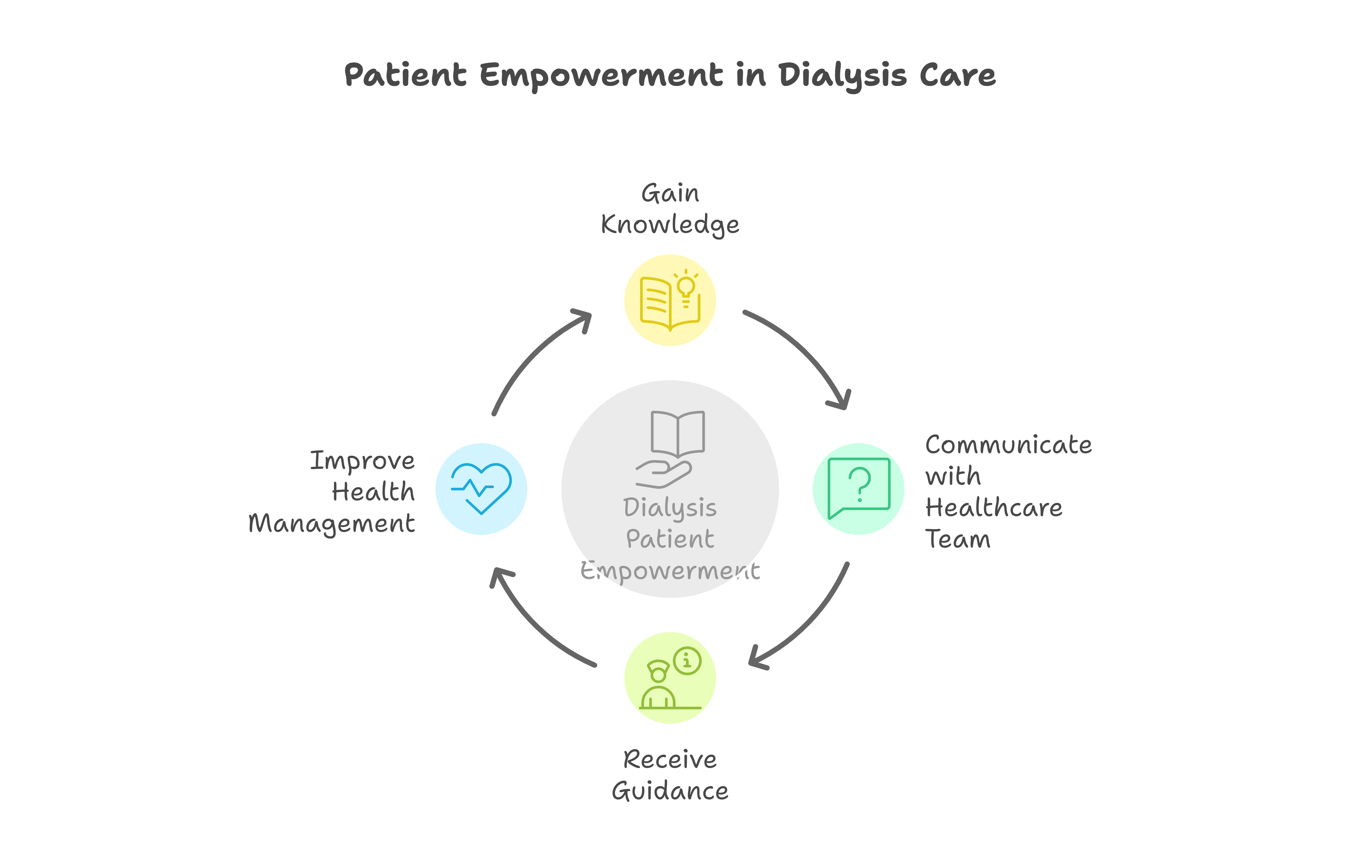Kidney disease is a growing health concern in India, affecting millions of people annually. For patients with chronic kidney disease (CKD), dialysis becomes a life-saving treatment. However, the financial implications of dialysis can often be overwhelming. In this blog, we’ll explore the costs involved in dialysis treatment in India, the factors affecting these costs, and the options available to make it more affordable.
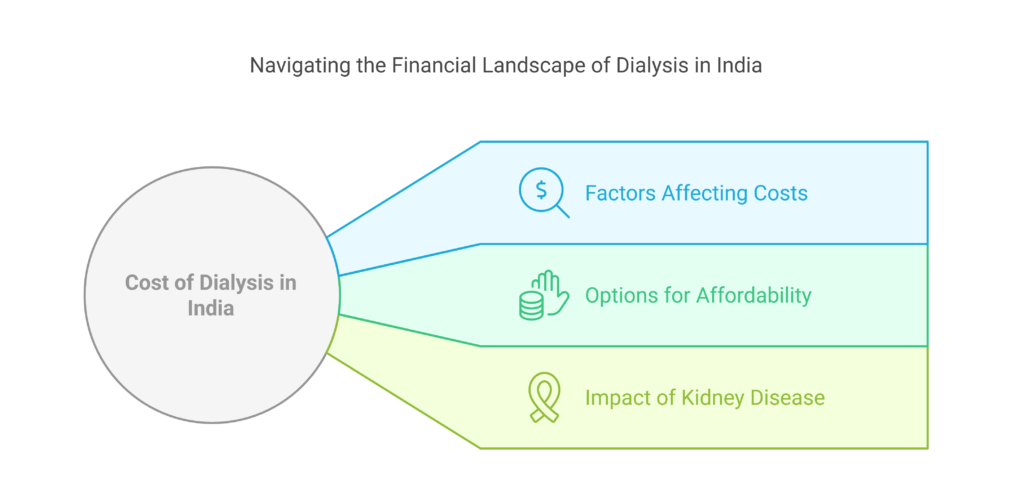
What is Dialysis and Why is it Expensive?
Dialysis is a medical procedure that removes waste, toxins, and excess fluids from the blood when the kidneys are no longer able to function effectively. The two main types of dialysis are:
- Hemodialysis (HD): Performed at dialysis centers or hospitals, typically three times a week.
- Peritoneal Dialysis (PD): A home-based treatment using a catheter and dialysis fluid.
The recurring nature of dialysis, combined with the costs of consumables, equipment, and professional expertise, makes it a significant financial burden for many families.
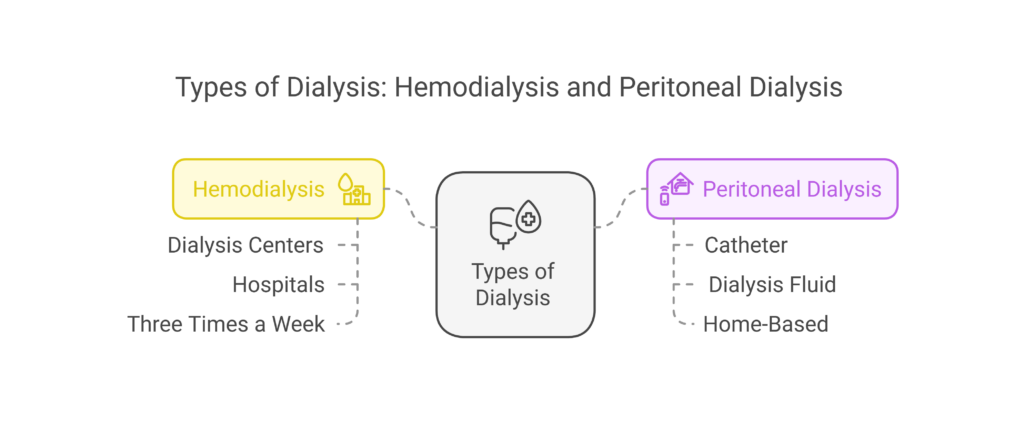
Breakdown of Dialysis Costs in India
- Cost of Hemodialysis
- Per Session: ₹1,500 to ₹4,000
- Monthly: ₹18,000 to ₹40,000 (12 sessions)
- Annually: ₹2,16,000 to ₹4,80,000
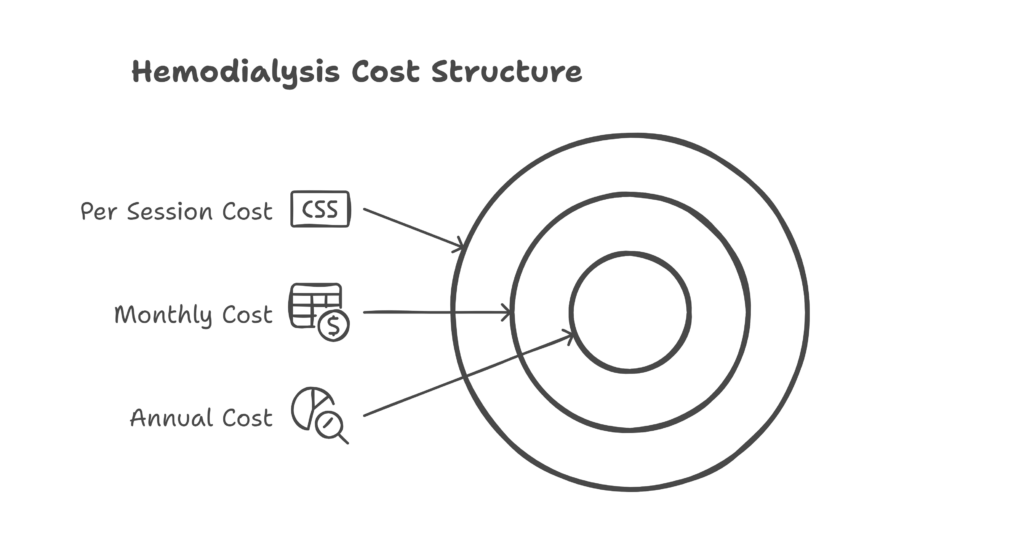
- Cost of Peritoneal Dialysis
- Initial Setup: ₹60,000 to ₹1,00,000
- Monthly Consumables: ₹30,000 to ₹50,000
- Annually: ₹3,60,000 to ₹6,00,000
- Additional Costs
- Laboratory Tests: ₹500 to ₹2,000 per test (routine blood work and infection monitoring)
- Medications: ₹2,000 to ₹5,000 per month (e.g., erythropoietin injections, iron supplements)
Hospitalization: Costs can range from ₹50,000 to ₹2,00,000 for emergencies or complications.
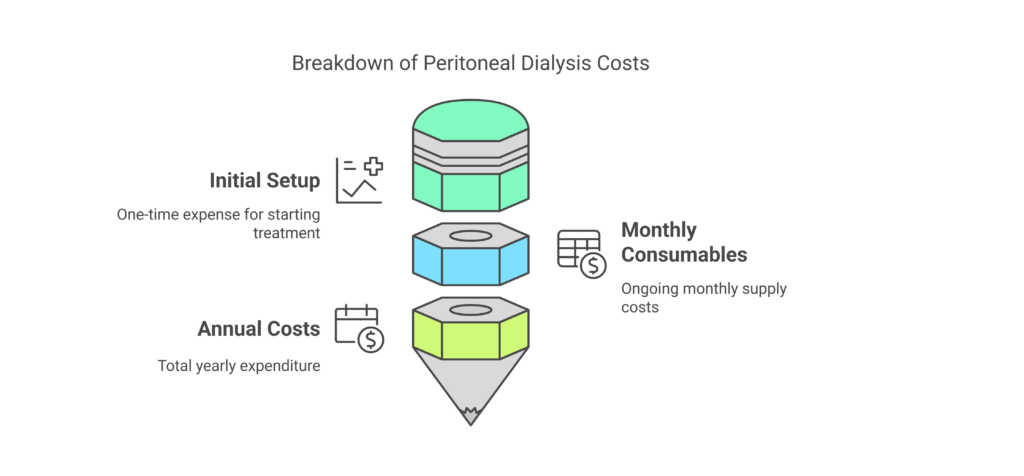
Factors Affecting Dialysis Costs
- Location: Dialysis in metro cities like Delhi, Mumbai, or Bangalore is costlier than in smaller towns.
- Type of Facility: Government hospitals, private hospitals, and standalone dialysis centers have varying price ranges.
- Type of Dialysis: Peritoneal dialysis is usually more expensive than hemodialysis due to the consumables involved.
- Insurance Coverage: Patients with health insurance often find partial or full coverage for dialysis costs.
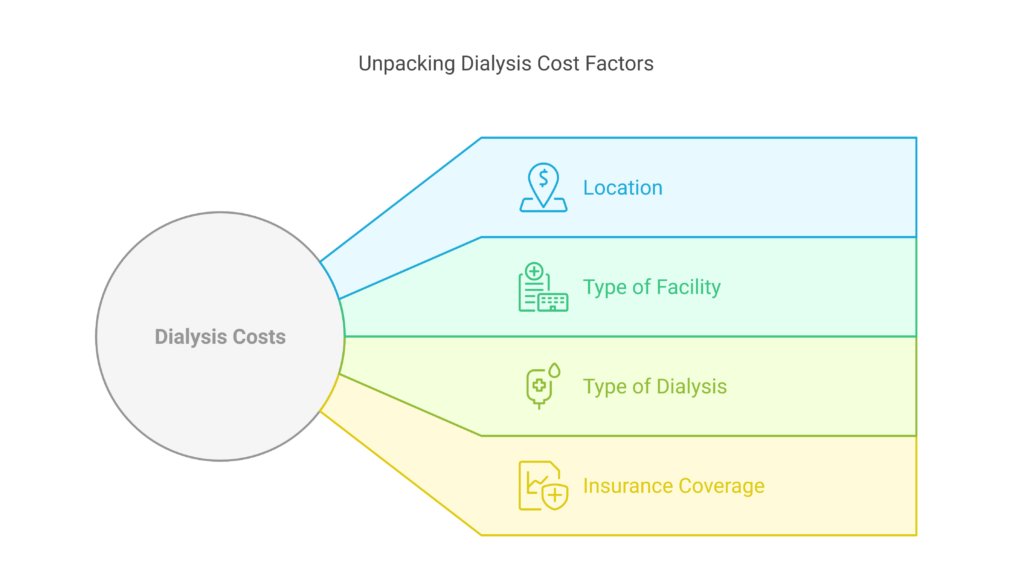
Affordable Options for Dialysis in India
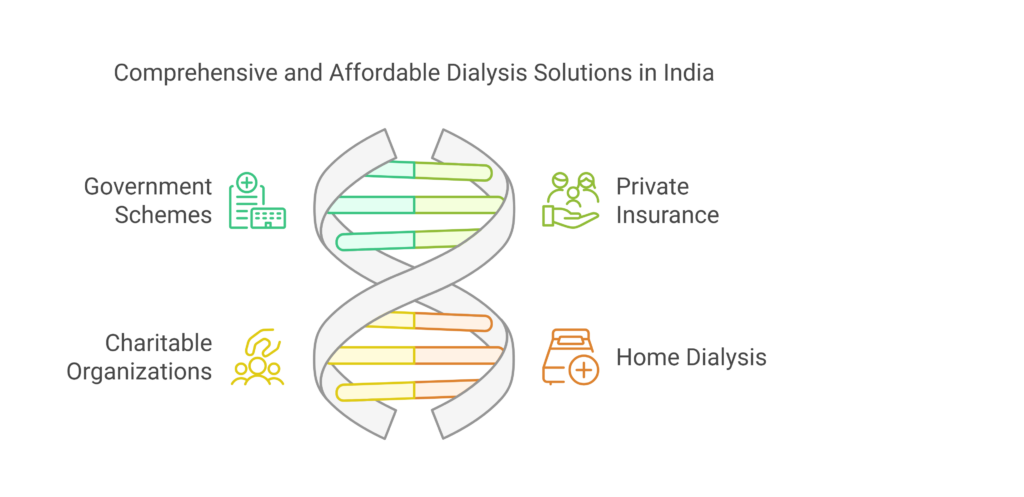
- Government Schemes and Subsidized Care
- Ayushman Bharat (PM-JAY): Covers up to ₹5,00,000 annually for eligible families.
- State Government Programs: Many states offer subsidized dialysis at government hospitals.
- ESI Benefits: Employees’ State Insurance provides dialysis coverage for workers and their dependents.
- Private Insurance Plans
- Several private health insurance companies offer plans covering dialysis costs. Review policies carefully to understand inclusions, exclusions, and claim processes.
- Charitable Organizations
- Indian Red Cross Society and NGOs like NephroPlus Foundation offer free or low-cost dialysis to underprivileged patients.
- Home Dialysis Programs
- While the initial setup is higher, home dialysis can reduce long-term costs by eliminating transportation and hospital charges.
- DCDC Kidney Care
- As India’s largest dialysis service provider, DCDC Kidney Care delivers high-quality, affordable dialysis solutions across the country. Known for its exceptional patient care, DCDC also provides subsidized or free dialysis services to economically disadvantaged patients. With a steadfast commitment to quality, it prioritizes the well-being of its patients, setting a benchmark in the industry.
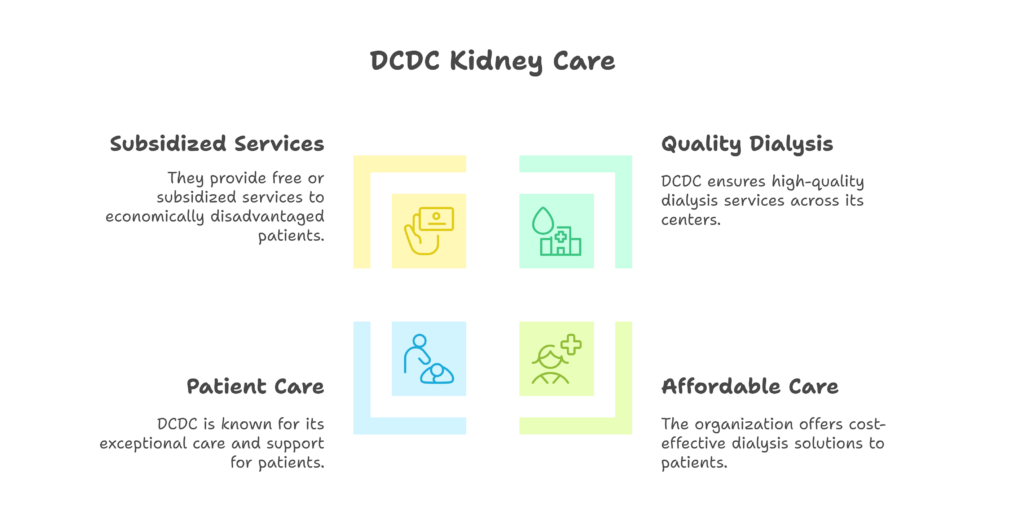
Tips to Reduce Dialysis Costs
- Plan Regularly: Choose a reliable center with consistent pricing.
- Opt for Bulk Purchases: If you’re on peritoneal dialysis, buying consumables in bulk often reduces costs.
- Leverage Tax Benefits: Dialysis expenses can be claimed under Section 80DDB for tax deductions.
- Seek Financial Aid: Reach out to government schemes and NGOs for additional support.
- Focus on Prevention: Proper diet, regular exercise, and timely check-ups can help prevent complications, reducing overall expenses.
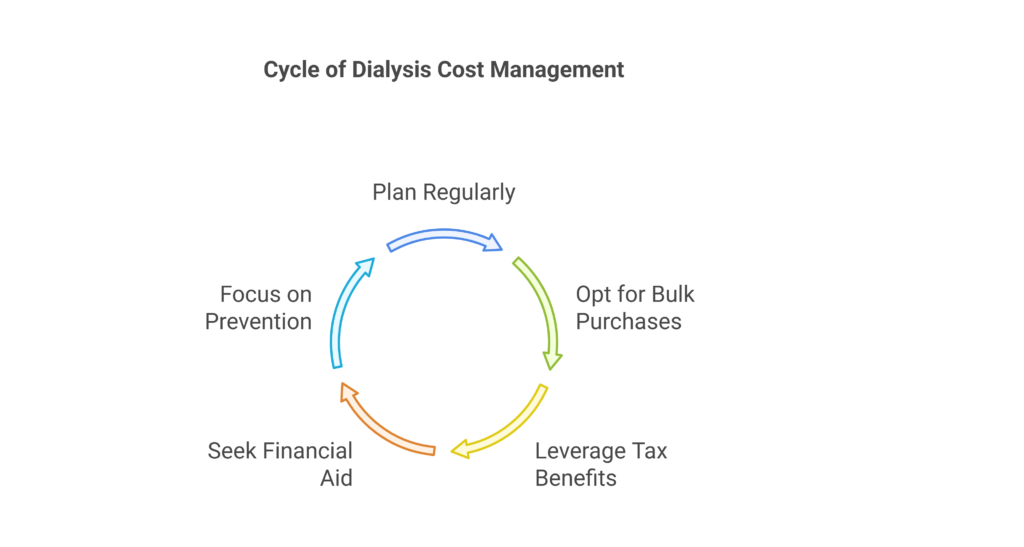
Conclusion
Dialysis is undoubtedly a costly and life-altering treatment, but understanding your options can make it more manageable. By leveraging government schemes, exploring insurance coverage, and seeking affordable healthcare providers like DCDC Kidney Care, patients can reduce the financial burden. Remember, early intervention and consistent monitoring are key to minimizing complications and associated costs.
If you or someone you know is struggling with dialysis expenses, explore these options and take proactive steps to ensure quality care without compromising financial stability.
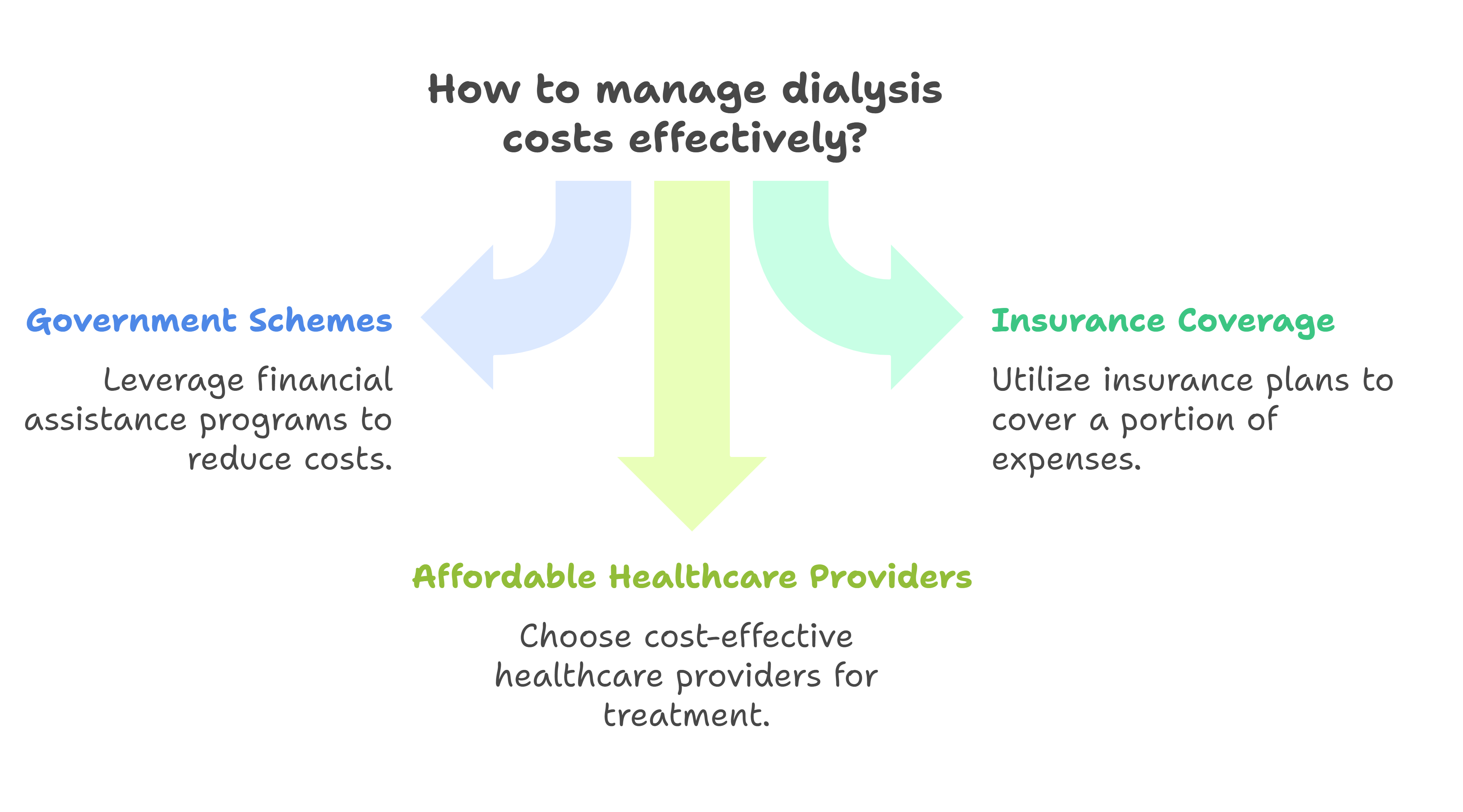
Empowering Patients
Being a dialysis patient is challenging, but knowledge is power. By understanding the types of access and how to care for them, you’re taking an important step toward better health. Remember, your healthcare team is there to guide you. Don’t hesitate to ask questions or share your concerns—you’re not alone on this journey.
